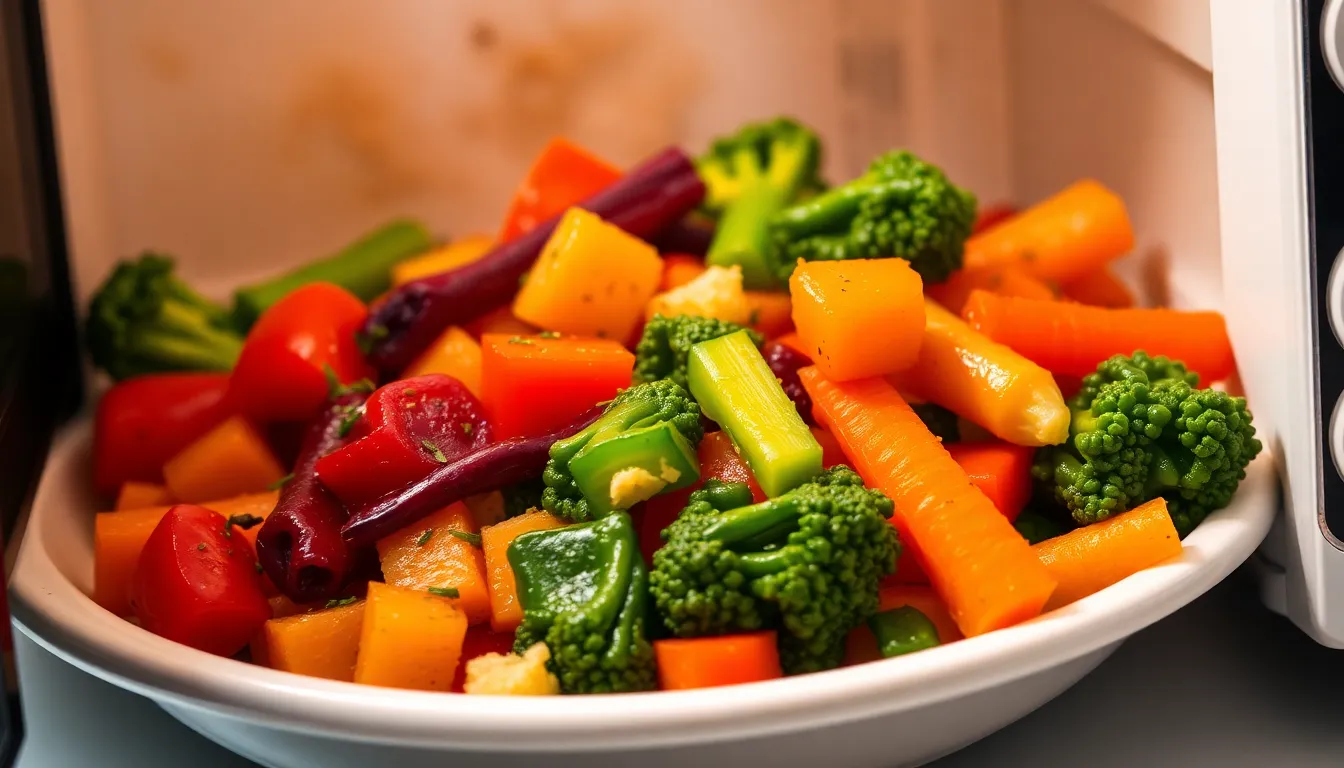Microwave Vegetables: Keeping Nutrients Intact
In the modern world where fast-paced lifestyles often leave us with limited time to prepare meals, the importance of incorporating vegetables into our diets has never been more critical. Vegetables are packed with essential nutrients that contribute to overall health, from vitamins and minerals to antioxidants. However, how we cook these vegetables can significantly influence their nutritional value. One cooking method that has gained attention for its ability to retain nutrients is microwaving. This blog post will explore how microwaving can preserve the nutrients in vegetables better than some other cooking methods.
Section 1: Understanding Nutrients in Vegetables
Subsection 1.1: Types of Nutrients Found in Vegetables
Vegetables are a rich source of various nutrients essential for maintaining health. Let’s delve into the key types of nutrients typically found in vegetables:
- Vitamins: These organic compounds are crucial for many bodily functions. Notable vitamins include:
- Vitamin C: Found in bell peppers, broccoli, and spinach, it boosts the immune system and aids in wound healing.
- Vitamin A: Present in carrots and sweet potatoes, it is essential for vision and skin health.
- Minerals: Essential for various bodily functions, key minerals include:
- Calcium: Found in dark leafy greens, it is vital for bone health.
- Iron: Present in spinach and lentils, it is crucial for oxygen transport in the blood.
- Antioxidants: These compounds help combat oxidative stress in the body. Vegetables like tomatoes and bell peppers are rich in antioxidants.
Subsection 1.2: The Impact of Cooking on Nutrient Retention
Understanding how cooking affects nutrient retention is essential for making informed choices. Various cooking methods can have different impacts on the vitamins and minerals in vegetables:
- Boiling: This method can cause significant nutrient loss as many vitamins, particularly water-soluble ones, leach into the cooking water.
- Steaming: A better option than boiling, steaming allows vegetables to cook without direct contact with water, preserving more nutrients.
- Frying: While this method can enhance flavor, it often requires oil and can lead to a loss of both nutrients and the addition of unhealthy fats.
Overall, the cooking method you choose can greatly affect the nutrient profile of the vegetables you consume. This brings us to the discussion of microwaving.
Section 2: Why Microwaving is Beneficial
Subsection 2.1: How Microwaving Works
Microwaving utilizes electromagnetic radiation to heat food. When microwaves penetrate food, they cause water molecules to vibrate, generating heat that cooks the food from the inside out. This method differs significantly from traditional cooking methods:
- Speed: Microwaving typically cooks food faster than boiling or frying.
- Energy Efficiency: It uses less energy compared to conventional ovens.
- Minimal Heat Exposure: The shorter cooking times reduce the exposure of vegetables to heat, helping to preserve their nutrients.
Subsection 2.2: Benefits of Microwaving Vegetables
The benefits of microwaving vegetables go beyond convenience. Here are some key advantages:
- Shorter Cooking Times: Because microwaving cooks food quickly, it minimizes the time that vegetables are exposed to heat, leading to better nutrient retention.
- Less Water Usage: Unlike boiling, where nutrients can leach into the water, microwaving uses little to no water, preserving more nutrients.
- Preservation of Color and Flavor: Microwaving helps maintain the vibrant colors and natural flavors of vegetables, making them more appealing and enjoyable to eat.
Section 3: Best Practices for Microwaving Vegetables
Subsection 3.1: Selecting the Right Vegetables
Not all vegetables are created equal when it comes to microwaving. Here’s a list of vegetables that microwave well:
- Broccoli
- Carrots
- Bell Peppers
- Spinach
- Green Beans
- Cauliflower
- Zucchini
Subsection 3.2: Preparing Vegetables for Microwaving
Proper preparation can enhance the microwaving experience. Follow these steps:
- Cleaning: Wash vegetables thoroughly under running water to remove any dirt or pesticides.
- Cutting: Cut vegetables into uniform pieces to ensure even cooking.
- Size Matters: Smaller pieces cook faster, so consider your preference for texture and doneness.
Subsection 3.3: Microwaving Techniques
To achieve the best results when microwaving vegetables, consider these techniques:
- Cooking Times: Adjust cooking times based on the type and amount of vegetables. Start with shorter times to avoid overcooking.
- Power Settings: Use a high power setting for most vegetables, but consider medium for more delicate options.
- Containers: Use microwave-safe containers, such as glass or ceramic, and avoid plastic that can release harmful chemicals.
Cooking Times for Common Vegetables
| Vegetable | Cook Time (minutes) | Power Setting |
|---|---|---|
| Broccoli | 3-4 | High |
| Carrots | 4-5 | High |
| Bell Peppers | 2-3 | High |
| Spinach | 2-3 | Medium |
| Green Beans | 3-4 | High |
| Cauliflower | 4-5 | High |
| Zucchini | 3-4 | Medium |
By following these best practices, you can maximize the nutritional benefits of your microwaved vegetables, ensuring that you enjoy all the colors, flavors, and health benefits they offer.
Conclusion
Incorporating vegetables into your diet is paramount for maintaining health, and microwaving stands out as a superior cooking method for preserving their nutrient content. With its speed, minimal water usage, and ability to maintain flavor and color, microwaving offers a convenient and healthy way to enjoy your favorite vegetables. By selecting the right vegetables and using proper preparation and cooking techniques, you can ensure that your meals are not only nutritious but also delicious. So next time you’re in need of a quick and healthy side dish, don’t forget the microwave!




